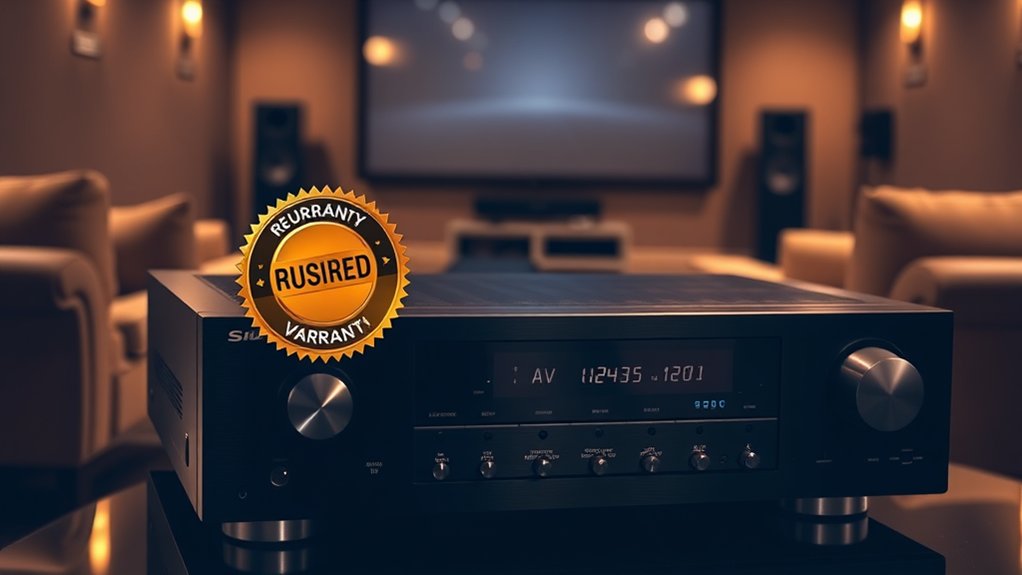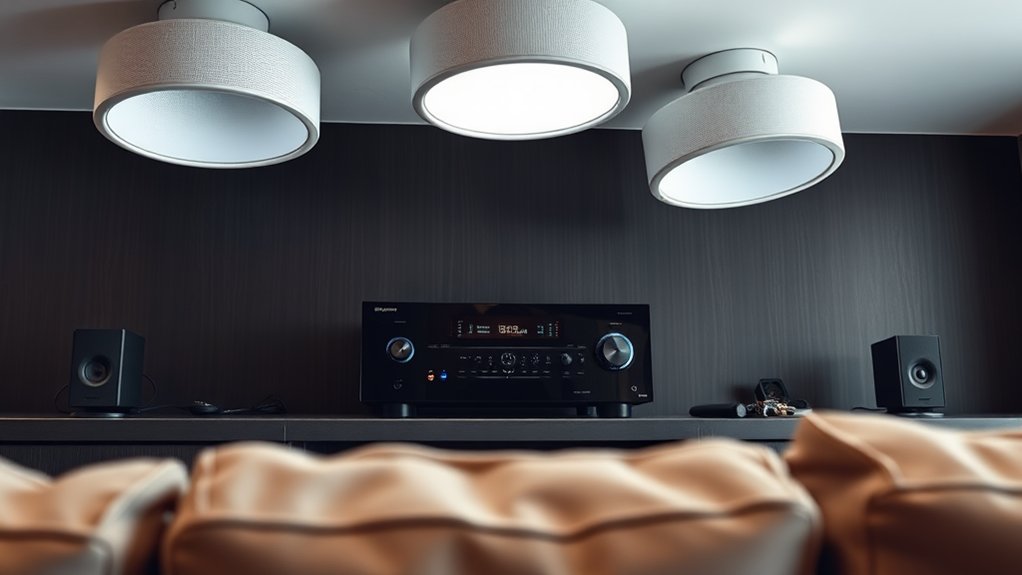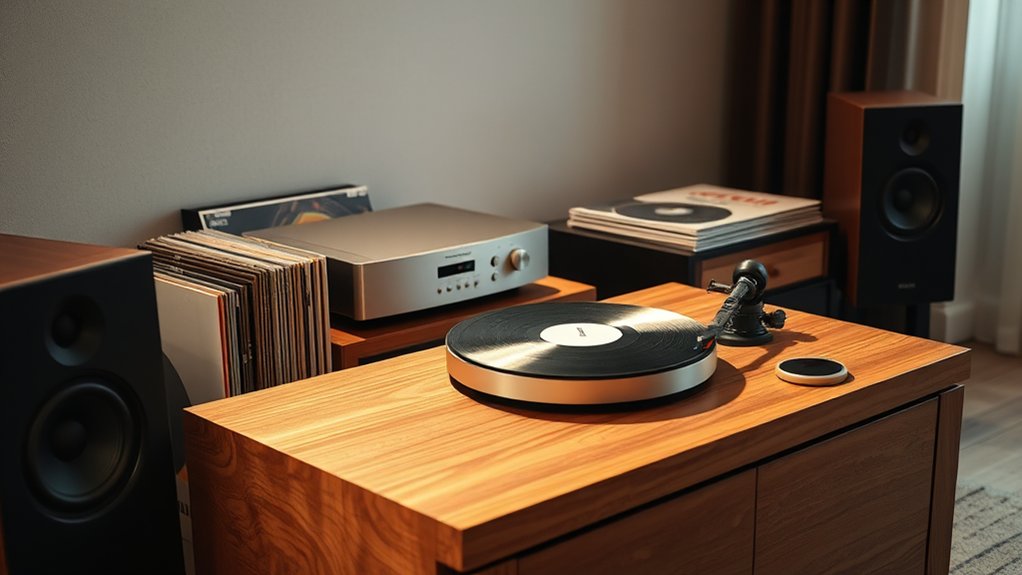Buying a used AV receiver with a warranty is a smart move, giving you both peace of mind and substantial savings. Think about it: many high-end models are now accessible at a fraction of their original price, and with a warranty backing, you’re protected against unexpected issues that might arise after purchase. Plus, warranties can extend the lifespan of your gear, ensuring you get the most bang for your buck. Curious about what else to take into account?
Key Highlights
- Purchasing a used AV receiver with a warranty offers protection against unexpected faults during the warranty period.
- Warranties on used receivers can reduce repair costs and extend the product’s lifespan, making them more economical.
- Many used receivers come with transferable warranties, enhancing resale value if you decide to upgrade later.
- Buying a used receiver often allows access to high-end models at a significantly reduced price, especially with warranty protection.
- Warranties can cover repairs for damages not included in standard manufacturer warranties, providing additional coverage peace of mind.
Understanding Extended Warranty Options
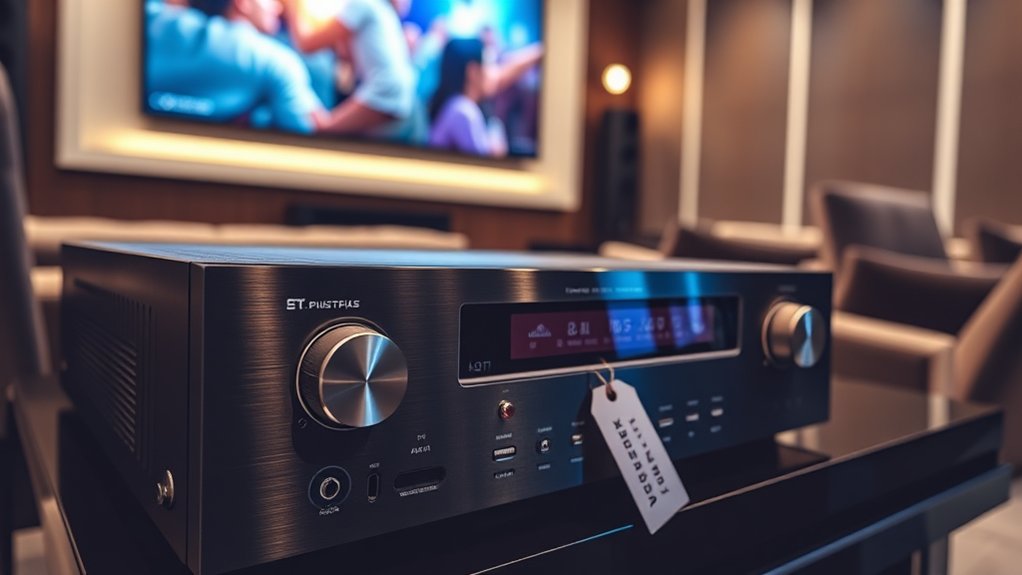
When you’re considering a used AV receiver, understanding the ins and outs of extended warranty options can save you a lot of headaches down the road.
An extended warranty typically kicks in once the manufacturer’s original limited warranty expires, covering repairs or replacements for your gear. This means protection against those mishaps you might expect, like accidental drops or troublesome electrical surges. Additionally, many warranty providers offer longer coverage periods to help protect your investment over time. However, it’s important to note that statistics show many electronics, including receivers, often fail within the first year of ownership, which underscores the importance of evaluating your warranty needs carefully.
Imagine this: you spill a drink on your receiver—yikes! Some plans even throw in technical support for when you’re troubleshooting your setup.
Remember, though, not all warranties cover the same things; you’ll need to read the fine print to avoid nasty surprises.
Advantages of Buying Used AV Receivers
Even though you might think that only brand-new models are worth your investment, buying a used AV receiver can actually open up a world of fantastic advantages.
For starters, you’ll enjoy significant cost savings, allowing you to allocate more of your budget toward quality speakers or other components. Ever thought about snagging a high-end model for a fraction of its original price? Many used receivers come featuring great technology, such as multiple HDMI inputs and 4K support, crucial for your modern home theater. Plus, you’re saving the planet by reducing electronic waste, giving these devices a second life. With well-maintained units often available, you can score excellent performance without breaking the bank. Additionally, many used models still support essential features like HDMI CEC, ensuring a streamlined user experience. This is particularly important as many receivers offer quality amplifiers that enhance overall sound fidelity, making your investment even more worthwhile. Moreover, buying used AV receivers may grant you access to advanced audio technologies that enhance your home theater experience. Who wouldn’t want that?
Key Elements of Warranty Coverage
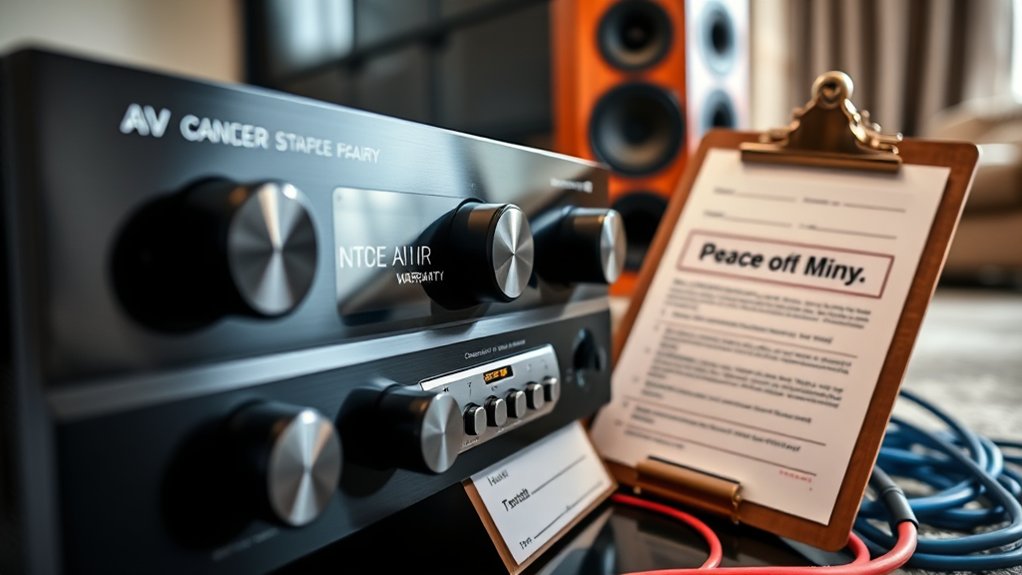
Understanding the key elements of warranty coverage is crucial when buying a used AV receiver, especially since solid warranties can make or break your purchasing decision.
Warranty length varies, typically ranging from 6 months to 3 years, so do check the details—Yamaha offers 18 months, while Onkyo provides 1 to 3 years depending on the model. Coverage typically includes mechanical and electrical failures under normal use, which can save your bacon if something goes wrong. Nonetheless, don’t expect coverage for accidents, misuse, or normal wear and tear. Additionally, the warranty applies to the original purchaser only, which means that if you’re buying used, ensure the warranty is still valid for you. And remember, you’ll need that dated receipt to claim warranty service, as without proof, it’s like trying to return a toaster without its box. Trust me, you don’t want that headache!
Economic Benefits of Warranty-Backed Purchases
Investing in a used AV receiver with a warranty isn’t just a smart choice; it’s like having an insurance policy against unexpected heartbreak.
Think about it: warranties cover potential faults during the warranty period, offering protection against pricey repairs.
Whereas extended warranties can typically cost up to 24% of the product’s price, a used warranty often costs less while safeguarding major components.
Extended warranties can be pricey, often reaching 24% of the product’s cost, while used warranties offer reliable coverage at a fraction of the price.
With warranties, you’ll not only contain repair expenses but also likely enjoy a higher resale value later, since future buyers trust the reliability.
Plus, warranties often increase the lifespan of your receiver, making it a more economical choice in the long run.
Who wouldn’t want to stretch their investment and save?
Risk Mitigation Strategies for Buyers
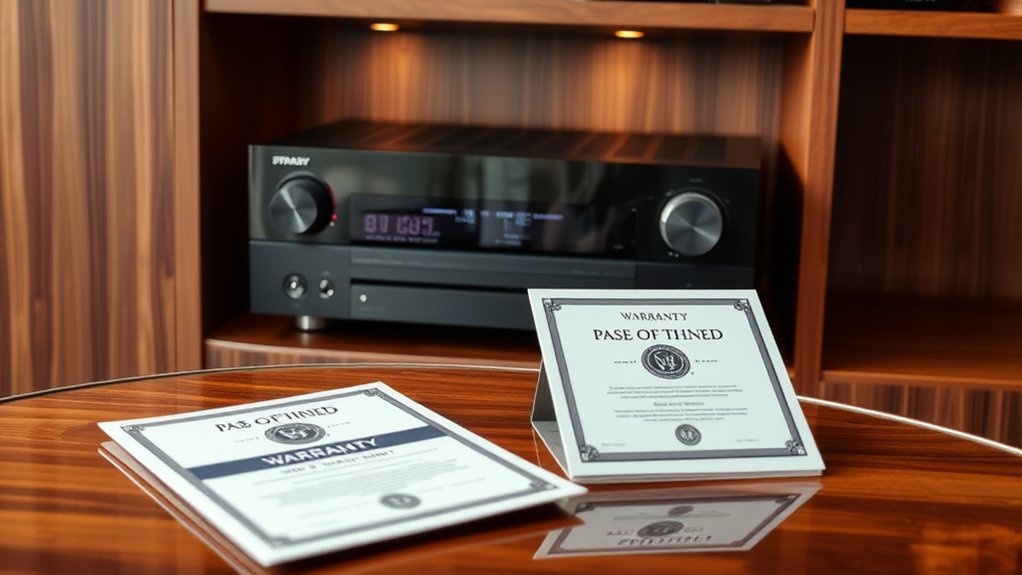
When you’re eyeing a used AV receiver, keeping your financial interests safe shouldn’t be an afterthought; it’s essential to have a solid plan in place.
Start by verifying the warranty coverage — does it include defects, and how long does it last? Knowing that a manufacturer covers repairs can alleviate financial stress from unexpected issues.
It’s likewise wise to inspect the unit thoroughly. Hunt for signs of damage or previous repairs; they could signal trouble ahead.
And hey, always ask for purchase documentation—without it, claiming warranty services might be like trying to find a needle in a haystack.
Comparing Manufacturer Warranty Policies
Buying a used AV receiver can feel like stepping into a minefield, especially in relation to warranties. When you compare manufacturer warranty policies, you’ll notice some key differences. Typically, warranties cover defects in materials and workmanship for 1 to 3 years, but don’t expect coverage for accidental damage or power surges. Sounds fun, right?
Some brands even offer limited parts-only coverage beyond the initial period. Extended warranties are worth considering; they can cover repairs for accidents or surges—often overlooked in standard policies. Just remember, terms vary widely, so read the fine print.
You’ll want to check whether the warranty is transferable, too, as it could boost the resale value if you ever decide to upgrade!
Navigating the Market for Used AV Receivers
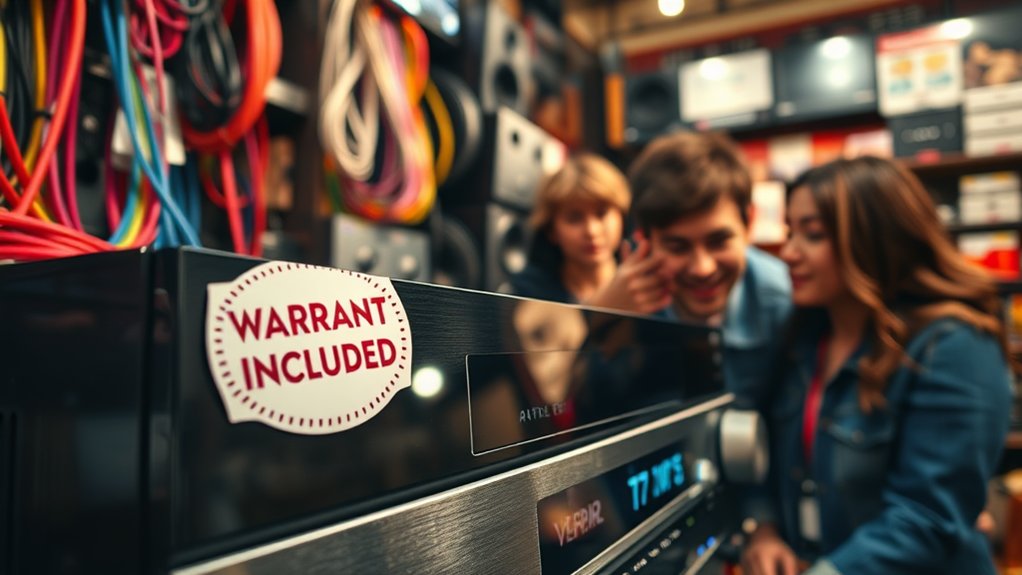
Maneuvering through the market for used AV receivers can feel like piecing together a jigsaw puzzle, especially with an abundance of options that cater to various audio needs and preferences.
Start by identifying your desired sound channel configuration—5.1, 7.1, or even 9.2—to guarantee compatibility with your home theater system. You’ll need to be savvy about the original manufacturer date and tech features like HDMI inputs or Dolby Atmos support.
Don’t forget to check the seller’s reputation; a reliable one will usually include a warranty, boosting your confidence. Keep in mind that some newer sound enhancements like Dolby Atmos support can significantly improve your audio experience, making it worthwhile to look for receivers with this feature.
Finally, compare prices across different platforms. Why settle for a bargain with no warranty when a slightly higher price can offer peace of mind? Your ears will thank you!
Frequently Asked Questions
How Do I Register My Used AV Receiver for Warranty Coverage?
To register your used AV receiver for warranty coverage, fill out the online form on the manufacturer’s website, and upload proof of purchase. Make certain you enter the model, serial number, and purchase date.
Can I Transfer the Warranty to a New Owner?
Yes, you can often transfer the warranty to a new owner, but that is contingent upon the terms outlined by the manufacturer. Make certain to check the original documentation and follow the necessary steps for transfer.
What Documentation Do I Need to File a Warranty Claim?
To file a warranty claim, you’ll need the original purchase receipt, product serial number, and any supporting documentation, like photos of the defect. Confirm you contact an authorized dealer for verification and processing.
Are There Any Exclusions in the Warranty Coverage?
Yes, there are exclusions in warranty coverage. Abuse, unauthorized repairs, and using unsuitable equipment can void it. Damage from external factors or normal wear and tear typically isn’t covered, so always check the warranty terms carefully.
How Do I Find Authorized Repair Centers for Warranty Service?
To find authorized repair centers for warranty service, visit your manufacturer’s website. Navigate to the “Support” section, or call customer service for assistance in locating the nearest authorized repair center based on your location.

